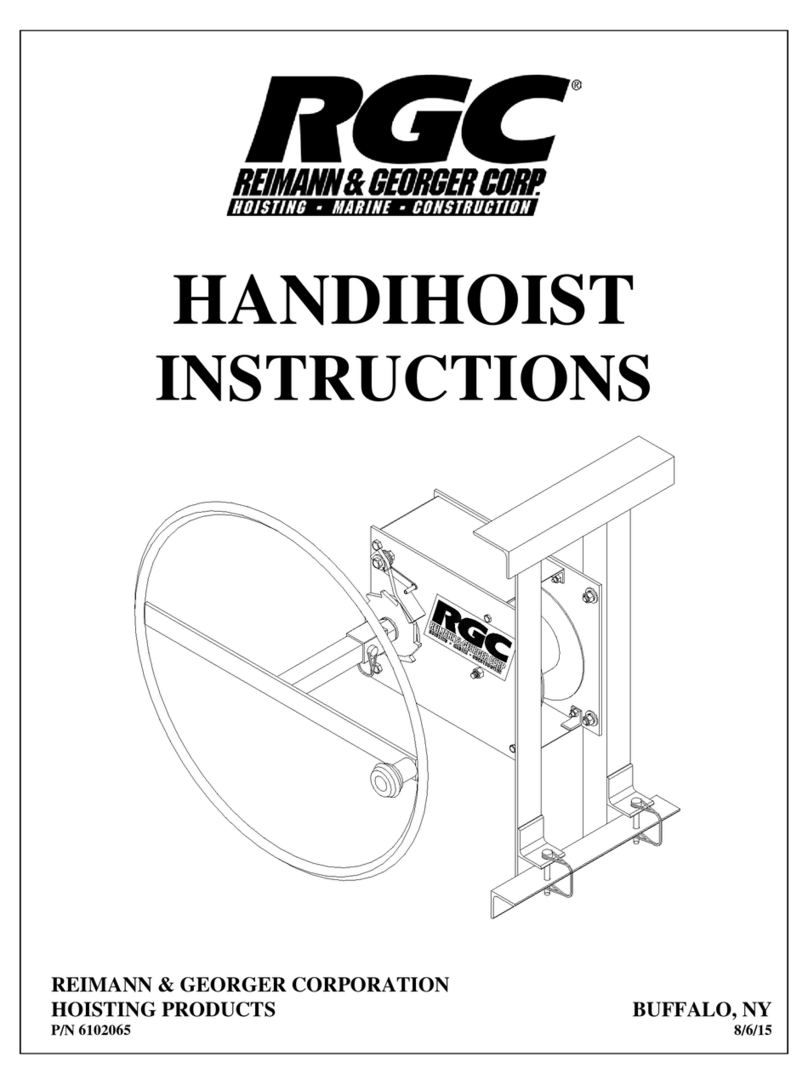RGC Classic Power Drive 250HG User manual
Other RGC Chain Hoist manuals
Popular Chain Hoist manuals by other brands

Schmalz
Schmalz SCH-S Operating and maintenance instructions

EINHELL
EINHELL Herkules H-F 1000 operating instructions

RED ROOSTER
RED ROOSTER TCR-250 user manual

POWERTEX
POWERTEX PCB-S1 Instructions for use

Ingersoll-Rand
Ingersoll-Rand QCH Series Product information

Creative Conners
Creative Conners CM Varistar Smart Chain Hoist Reference manual

KITO
KITO TCL Series owner's manual

Stagemaker
Stagemaker SR05 user manual

Parkside
Parkside PSZ 250 A1 Operation and safety notes

Jet
Jet JLP-A Series Operating instructions and parts manual

Tractel
Tractel Bravo AC Installation, operating and maintenance manual

Ingersol Rand
Ingersol Rand LC2A Series Product information

Performance Tool
Performance Tool W4005DB owner's manual

Gis
Gis LP Series Translation of the original instruction manual

Pelsue
Pelsue PHQR Series product manual

Yale
Yale LH2 Operating, Maintenance & Parts Manual

Powerfix Profi
Powerfix Profi 306852 Operating and safety instructions

Sievert Crane & Hoist
Sievert Crane & Hoist CM BANDIT Operating, Maintenance & Parts Manual











